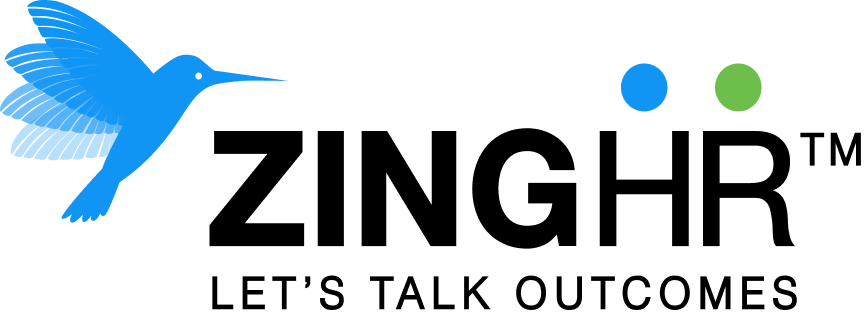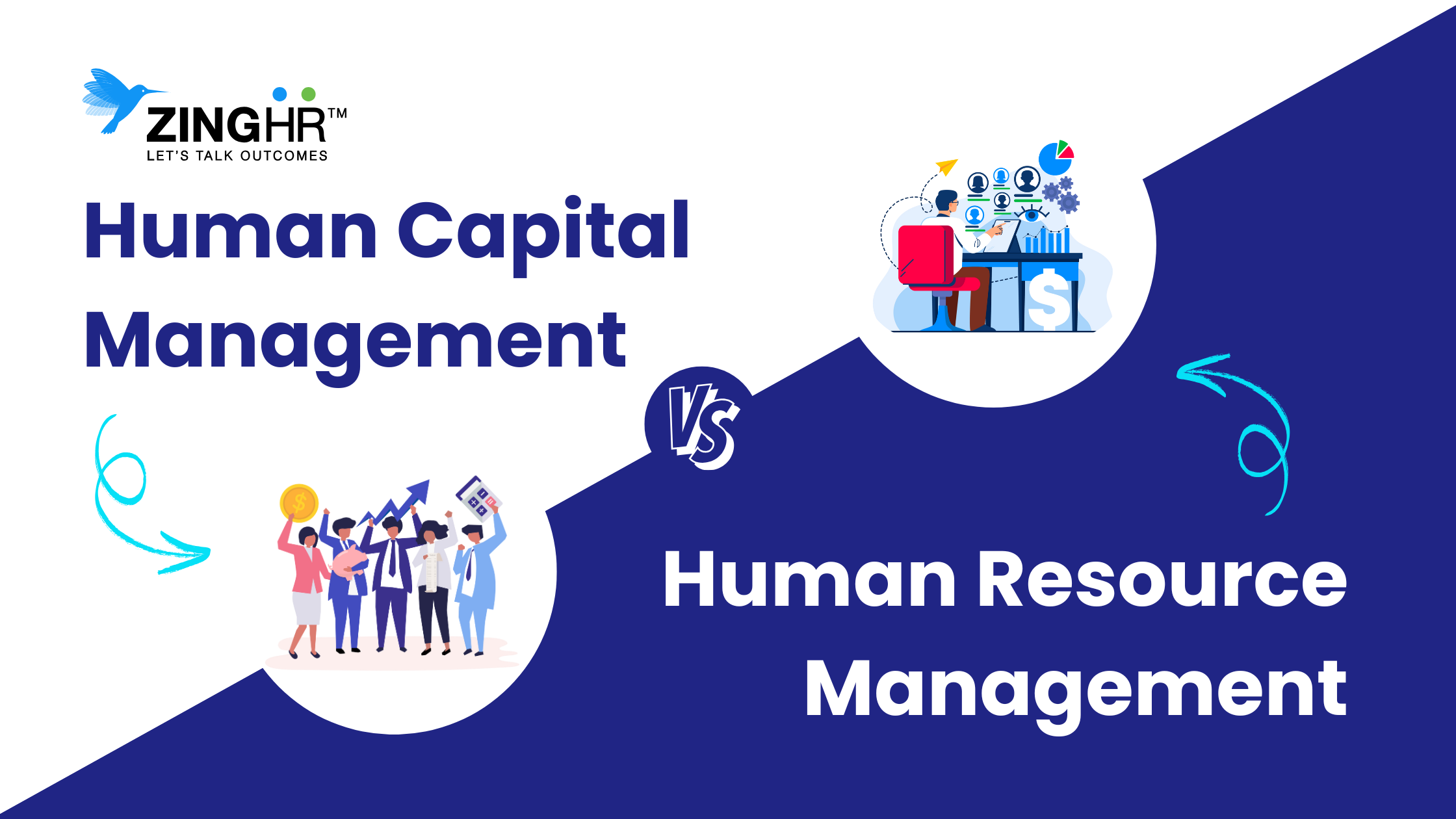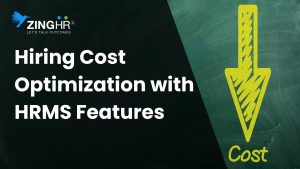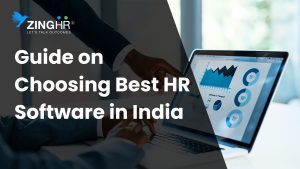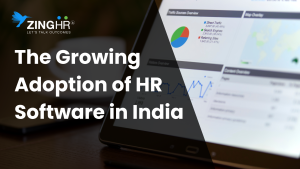Human resource (HR) professionals are currently experiencing a major transformation, with their core role evolving beyond its traditional scope. Companies are increasingly recognizing the strategic importance of HR as more than just managing hiring and terminations. This recognition has made the concept of human capital management (HCM) popular among industries.
Human resource management focuses on managing people and their day-to-day administrative tasks, including recruitment, payroll, compliance, and data management. HCM is a broader concept that takes a more comprehensive, strategic human resource management. It covers, in addition to traditional HR responsibilities, performance management, training, career development, and budgeting. While these terms were coined not so far apart—HR in the early 20th century and HCM in the 1960s—the differences between them are quite sharp.
This blog will dive deep into the difference between HR and HCM, HCM meaning, and the modern shift toward HCM.
HR vs HCM: Table Highlights
Let’s understand the difference between HR and HCM with the help of this table.
| Aspect | HR | HCM |
| Scope | Core administrative functions like payroll, hiring, and compliance. | HR functions plus talent management, workforce planning, and analytics. |
| Primary Focus | Managing employee-related tasks such as recruitment, benefits, and compliance. | Maximizing the value of human capital through strategic planning and development. |
| Approach | Traditional, administrative, and reactive. | Strategic, integrated, and proactive. |
| Technology | Often uses standalone systems for individual HR tasks. | Utilizes integrated software suites that connect various talent and workforce processes. |
| Data Handling | Manual and time-consuming. | Digital, automated, and real-time. |
| Talent Management | Not included. | Included. |
| Employee Experience | Primarily focuses on meeting basic employee needs and compliance. | Emphasizes holistic employee experience, engagement, development, and retention. |
| Use Case | Small to medium-sized organizations. | Large organizations looking to scale and optimize resources |
| Decision-making | Based on intuition or past data. | Data-driven with strategic workforce planning. |
| Performance Management | Follows the manual process. | Provides detailed goal-setting with data insights. |
| Learning & Development | Involves general, company-wide training sessions. | Involves customized learning paths for every employee based on their goals. |
| Cost | Cost-effective. | More expensive than traditional HR but provides long-term benefits. |
| Scalability | Not possible. | Possible. |
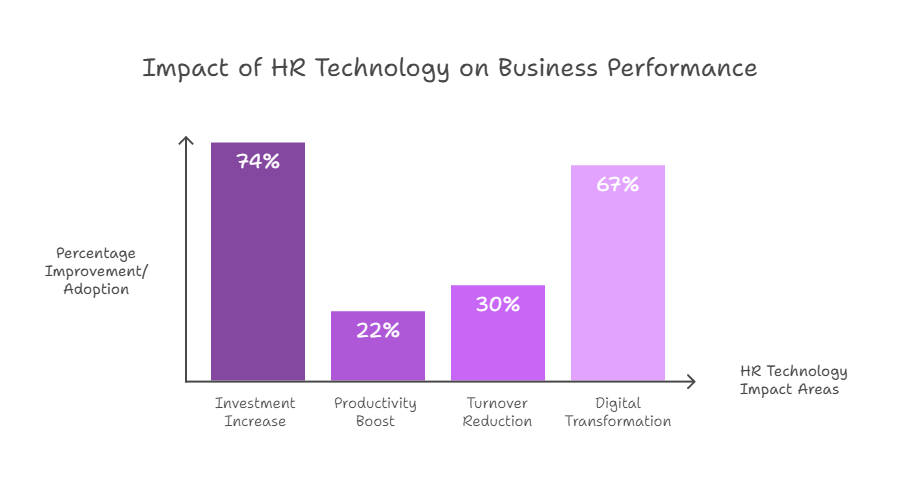
Why the Shift from HR to HCM
The global human capital management is expected to grow from USD 34.12 billion in 2025 to USD 64.97 billion by 2032. Such rapid growth demonstrates that companies, big and small, will replace HR with HCM in the coming years for the following reasons.
1. Rise of Digital Transformation
The new workforce wants everything to be digitally accessible, which demands a change in the way things work. Moreover, with the increasing integration of technologies like automation, AI, cloud computing, and digital communication tools, companies must adapt unless they want to become stagnant.
An HCM platform digitizes many HR functions, including recruitment, onboarding documentation, payroll, and compliance reporting. It helps save the time spent on administrative, manual, and repetitive tasks.
2. Focus on Employee Experience and Engagement
There is a growing acknowledgment of the fact that to hire and retain the best employees, you must engage them. Without proper communication, experience, and engagement, companies quickly lose out on fitting talent.
HCM platforms allow you to begin the engagement process right from the first call to a candidate. They can send notification updates regarding the application and reminders about submitting forms. Upon hiring a candidate, HCM can facilitate a standardized onboarding process, circulate regular feedback forms, enable cross-functional collaboration, etc., to sustain a happy employee experience.
3. Need for Data-driven Decisions in Workforce Management
A common fallacy about HR is that it is biased at its core. Since HR decisions concern employees the most, people are quick to place blame without thinking twice. Without proper data and reasoning to support its decisions, HR may lose employee trust and even great talent.
HCM provides a centralized platform for digital data storage and accessibility. Decisions based on data on employee performance, work allocation, retention, etc., are generally fair and in the best interest of the organization and its employees.
4. Scalability and Integration Benefits
HCM, as a concept, has a wide scope. While traditional HR may be suitable for startups and SMEs, growing teams require a tool that can accommodate changing needs. HCM can support your need to expand operations across departments, locations, work modes (in-office, remote, or hybrid), etc.
Moreover, it’s easy to integrate your new software with the systems already being used in the organization. This easy setup reduces the learning curve, avoids confusion, and ensures efficiency.
ZingHR: A Complete Hire to Rehire HCM Platform

Benefits of Using HCM Platforms Over Traditional HR
In the HR and HCM comparison, HCM gets extra points for the following unique features and benefits it offers beyond fulfilling traditional HR duties.
1. Humans at Their Best; Bots for the Rest – Captain Zingo
Previously, people used to hesitate to call a company’s customer support team due to the long wait times and the need to explain the issue repeatedly to several assistants. AI chatbots have made reaching out seamless, efficient, and systematic.
In HR, chatbots can resolve candidate queries, inform employees about new benefits and policies, develop personalized career development plans, and more. Take ZingHR’s AI chatbot, Zingo, for example. It can do all this at a lightning-fast speed and has the following features:
- Accessible through the website and the mobile app.
- Multilingual support for diverse Indian regions.
- Seamless integration with ZingHR.
- 24/7 availability with high volume handling.
- User-friendly interface; no learning curve.
Zingo supports personalisation, provides time- and cost-savings, and frees up HR to focus on strategy building and retention.
2. Strategic Leadership Transition – Succession Planning
An organization’s success depends significantly on a workforce that’s trained and vetted to take the reins of future leadership. To guarantee a fail-proof board composition in the coming years, current leadership must implement succession planning to identify, assess, and prepare outstanding individuals right from the start.
This is where ZingHR’s Succession Planning Module comes in, ensuring business continuity and reducing employee turnover. With our module, you can:
- Identify diverse talent based on merit.
- Use data to assess profiles and behaviours.
- Develop customized learning paths for potential successors.
- Monitor performance digitally and regularly.
- Prepare a future-ready workforce.
3. RiZING Smart Recruiting Stack – Recruitment 2.0
Have you been considering overturning your recruitment process to make it more efficient, tech-enabled, accurate, and smooth? ZingHR’s Recruitment 2.0 has everything you will need; all you need to do is sign up and let it organize the rest.
With Recruitment 2.0, you get access to recruitment bots, an AI assistant, AI-generated interview questions, customized video job descriptions, updated compensation benchmarks, and more. By using this AI-driven powerhouse for hiring and onboarding, you can:
- Design a suitable, easy-to-follow hiring workflow.
- Find suitable candidates for your specific industry, whether you’re hiring for a newly vacant position or in bulk.
- Engage candidates through AI interviews, video job descriptions, and surveys.
- Build a talent pool of suitable candidates, neatly organized in terms of skills, education, and experience.
Moreover, the platform offers robust user role and permission management, guaranteeing data security.
4. Performance Management
Human Capital Management platforms view employees as more than just salary recipients. The relatively new concept acknowledges employees as strategic assets that can make or break a business.
To think, collaborate, and perform at their best level, employees must believe that the organisation rewards them fairly based on merit, whether through verbal appreciation, awards, promotion, or financial rewards.
HCM platforms like ZingHR enable you to:
- Help employees set achievable goals and assess them during and after the timeline.
- Upskill talent through trackable online courses with assessments.
- Pull data insights to understand employee performance, make fair decisions, and deliver constructive feedback.
- Tie certain performance benchmarks to appropriate rewards.
5. Workforce Management
While traditional HR handles basic workforce management, HCM elevates this function with a more strategic, data-driven approach. HCM focuses on the strategic management of employees through a smart digital platform. It enables you digitize and simplify numerous aspects, including payroll, time and attendance, employee life cycle, employee engagement, and work allocation.
When you opt for workforce management solutions on an HCM platform, you will be able to:
- Automate weekly, daily, monthly, or outcome-based payments, even accommodating gig workers.
- Get a one-shot view of real-time attendance, current and upcoming leaves, and employee availability.
- Enable face recognition to facilitate quick, hardware-free, and location-enabled check-ins.
- Approve employee transfers, requests, onboarding confirmation, and even resignations with one click.
6. Agile Organization Design – Organogram
Hierarchy is the foundation of every successful business, and an organizational chart is the best way to represent it. In the HR and HCM comparison, HCM puts a digital spin on the traditional pen-on-paper org chart.
These modern organization designs, also called organograms, not only display the names of employees but also let you open the complete employee profile by clicking their name. Agile organograms can help you:
- Improve workforce distribution to avoid burnout and optimize the available employee capacity.
- Enable new joiners to understand the communication hierarchy quickly and know their peers.
- See updates by automatically adding, removing, or moving employees based on real-time personnel changes.
- Motivate employees by showing them a clear career path for their roles.
Therefore, between HR and HCM platforms, HCM provides additional benefits of analytics, AI chatbots, career development, employee lifecycle management, and workforce management. Is your company ready to experience these benefits?
When Should a Company Move to HCM?
If you have started giving serious thought to HR vs HCM upon reading this blog and are wondering what the perfect time to transition to HCM would be, keep reading.
- Scaling your workforce: An expanding workforce has evolving needs, especially when mixing different generations of workers.
- Global expansion: Every new location may lead to cultural clashes or compliance issues, best dealt with by expert HCM professionals.
- Remote team management: Remote teams need digital communication, accessibility to resources, and opportunities for collaboration. They are more likely to feel left out and, thus, demotivated and unproductive.
- Compliance complexity: Labor laws and regulations keep getting updated, which can make compliance documentation and reporting difficult.
Let’s take the case of these brands to learn about their outcomes when they shifted from HR to HCM platforms.
1 . NBFC Case Study
Challenge: The company was facing inconsistencies in attendance tracking due to the use of a manual register. Managers marked employees’ attendance and approved regularization requests at the month’s end, which caused severe stress.
Solution: The NBFC, with the help of ZingHR, implemented a mobile app with geo-fencing-enabled punch-in/out. Employees were mandated to punch in and out through the app.
Outcome: The new mobile app eliminated inconsistencies and proxies in attendance records. There was a digital record of real-time employee attendance at any given moment, significantly reducing manual workload.
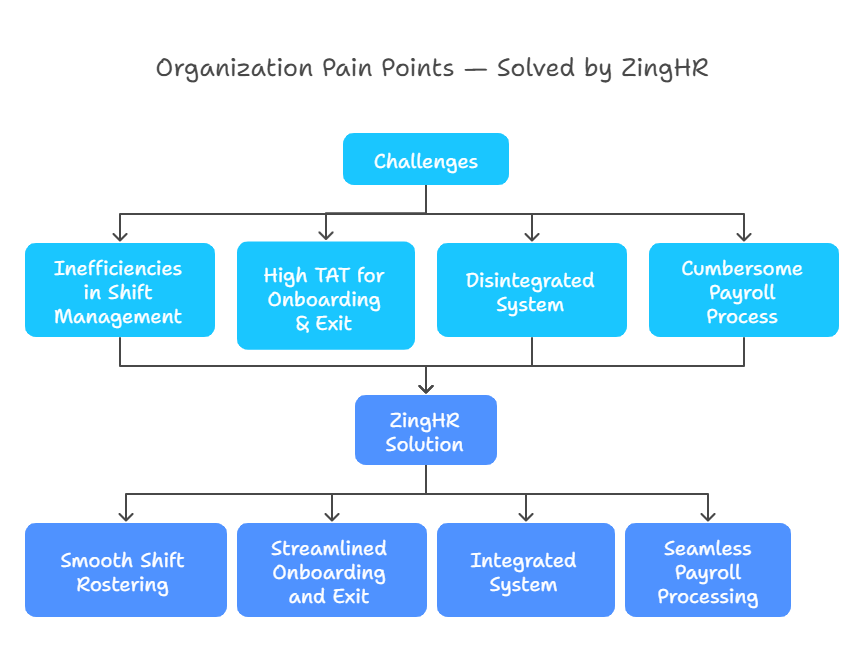
2. An Indian Gateway Services and Food Solutions Provider
Challenge: The company was struggling with inefficiencies in workforce shift management, time-consuming onboarding and exit processes, payroll delays, and the mismanagement of separate HR systems.
Solution: The company transitioned from its legacy system to ZingHR HR suite for recruitment, payroll, expense management, and more tasks.
Outcome: Upon using ZingHR, the company observed easy shift rostering, streamlined onboarding and exits, seamless payroll processing (completed in minutes for 7,000+ employees), and integrated systems.
FAQs
1. Why do companies use HCM software?
Companies use HCM software to automate manual, time-consuming HR processes. HCM platforms streamline everything from recruitment and talent management to employee engagement, payroll, and compliance. They increase efficiency, reduce costs, and enable data-driven decision-making, freeing up HR to focus on more strategic tasks.
2. Is HCM Replacing HR?
Yes, HCM is steadily replacing HR. A growing number of Fortune 500 companies are adopting HCM systems to standardize and automate manual processes. Startups and SMEs are also investing in HCM to enjoy scaling benefits as they grow.
3. How does HCM improve employee management?
HCM improves employee management by streamlining recruitment, developing personalized career paths, digitizing payroll, and focusing on succession planning. It also enables you to optimize work distribution and deploy employees to varied projects when needed.
HR vs HCM: Pick HCM to Move Forward
The difference between HR and HCM lies in perspective. While HR takes on the responsibilities of hiring, training, and managing employees, HCM focuses on developing and preparing them to lead the organization forward, no matter what roles they have. The HR vs HCM decision determines the difference between businesses with a smart, adaptable, and future-ready workforce and those without.
If you are looking for the ultimate HCM solutions for your small or large business, you will find everything you might need at ZingHR. Transitioning from HR to a comprehensive HCM module? Our HR Ground Zero program can help you set up the basics, including data analytics, digital storage, employee creation, and record keeping. Schedule a demo to learn more!
